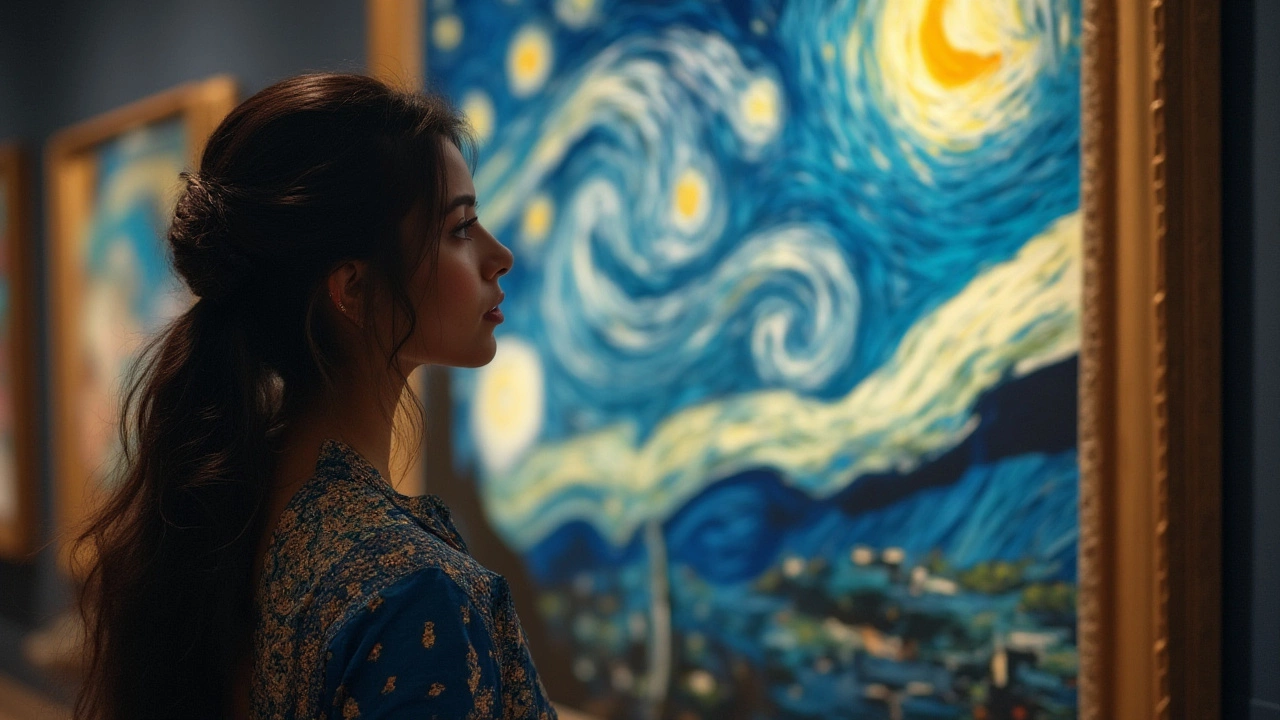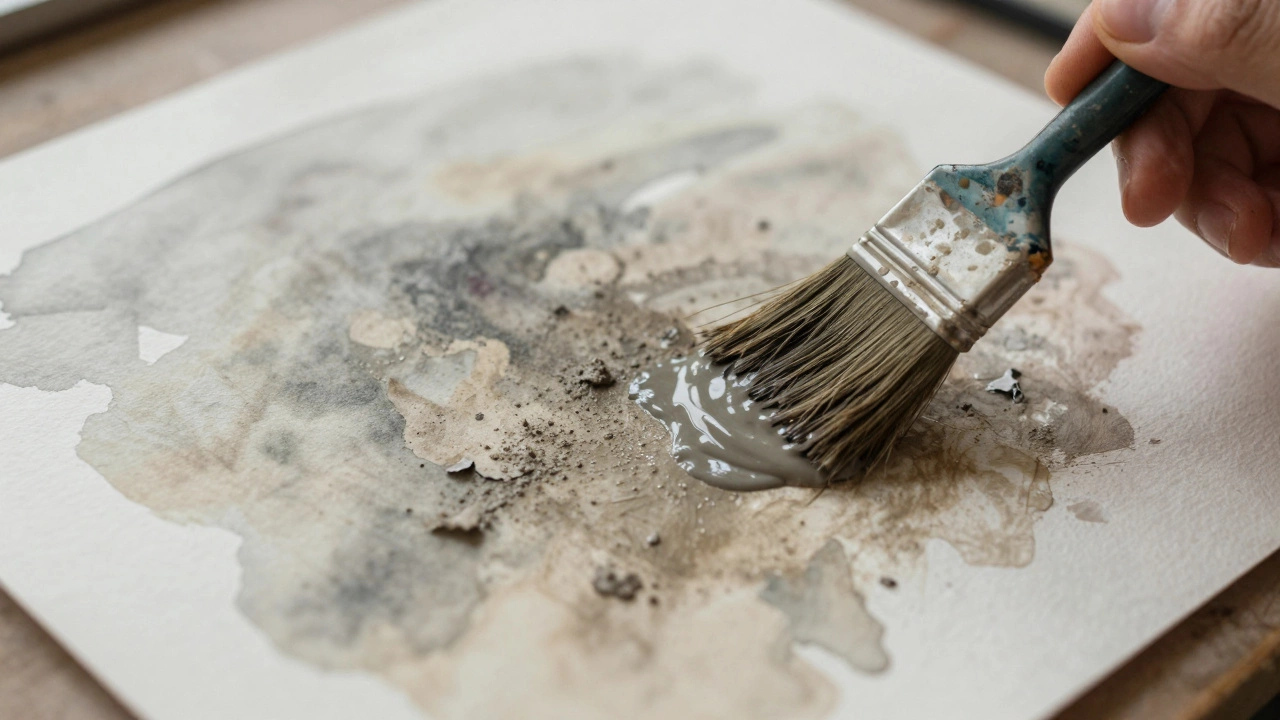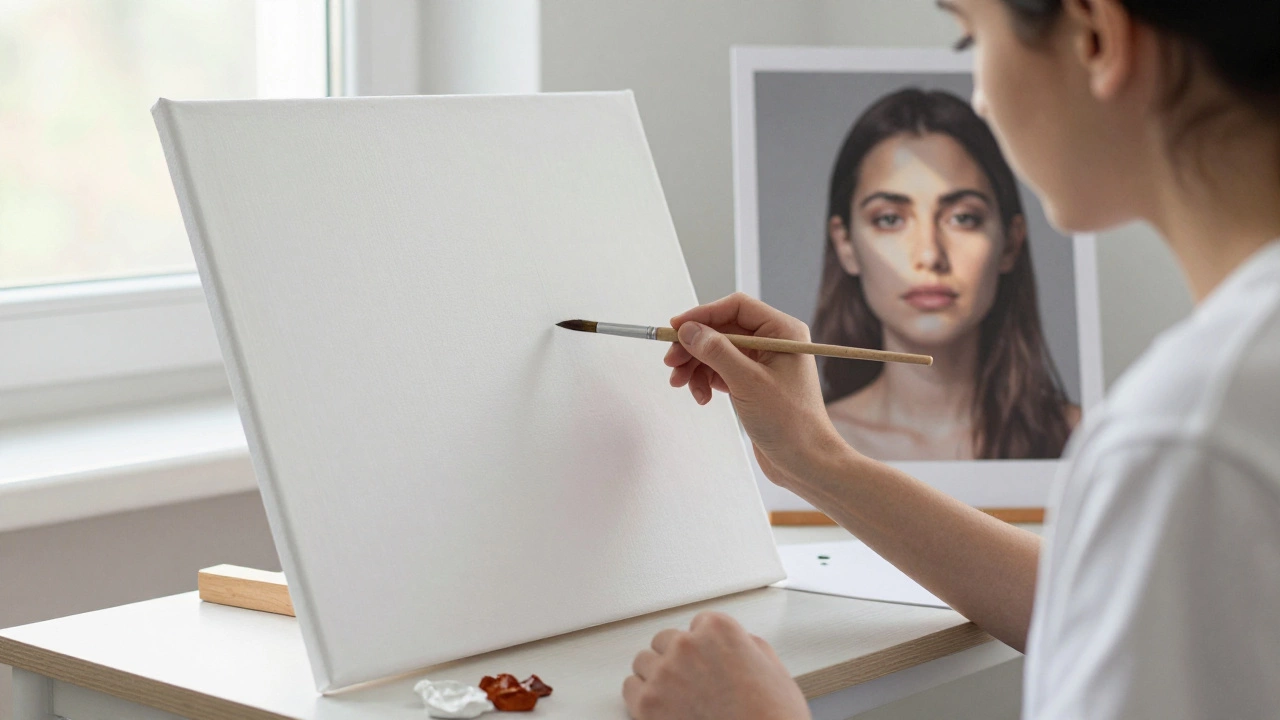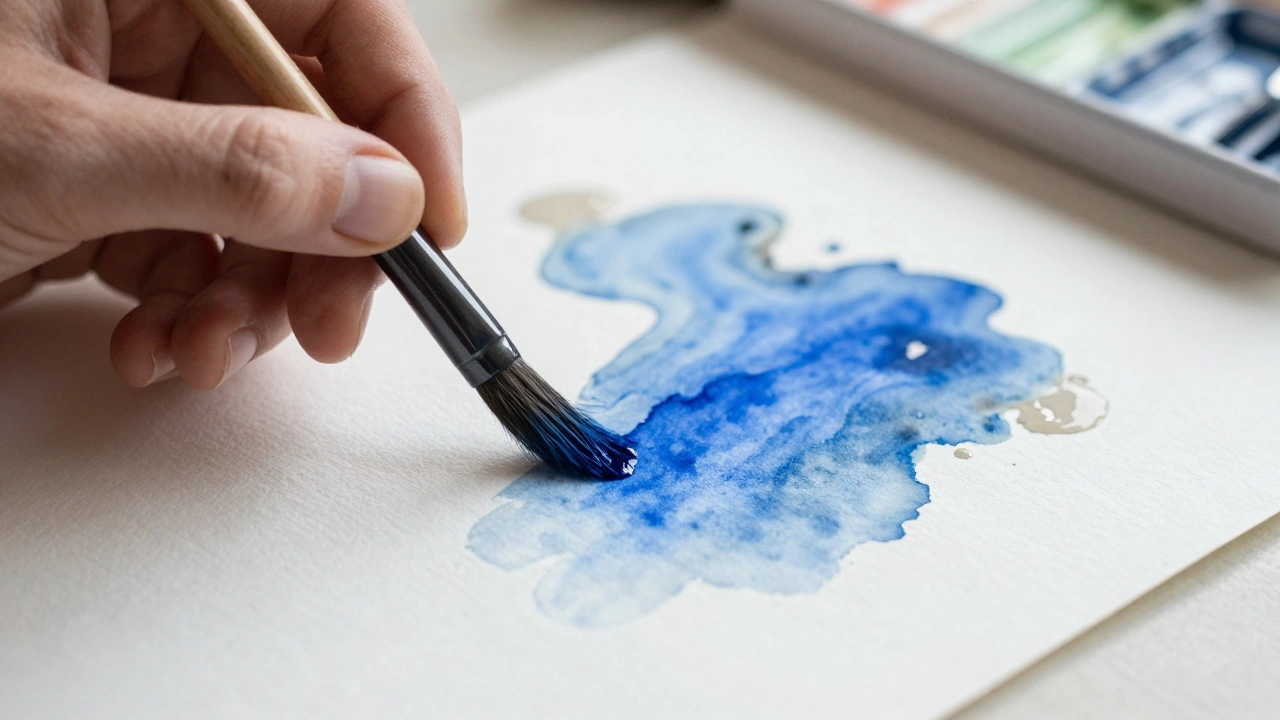If you’ve ever wandered through an art museum or browsed a book of famous paintings, chances are you’ve seen the swirling, hypnotic sky of “The Starry Night.” That painting, with its wild energy and cosmic whirls, is one of the most recognizable artworks in the world. But scroll through social media or listen in on museum tours, and you’ll hear a surprising question: Was Starry Night painted with watercolor? For something so iconic, you’d think the details would be set in stone. Yet, confusion bubbles up—a mix of art myths, hearsay, and curiosity about Van Gogh’s creative process. Let’s clear up that mystery and peel back the layers to see what makes this painting tick and what paints were actually swirling on that canvas.
What Did Van Gogh Actually Use to Paint Starry Night?
Let’s get right to the heart of it: “Starry Night” was not painted with watercolor. The actual medium Van Gogh used for this legendary work was oil paint. It’s not even just any oil—Van Gogh worked with oil paint on canvas, thick and luscious, loaded onto his brush like frosting on a cake. This allowed him to layer, blend, and trowel those bold colors to life. Watercolor, by contrast, is transparent, subtle, and soaked into paper, not canvas. If you’ve tried watercolors, you’ll know they’re all about soft flourishes and delicate layers. Oil painting is a whole different universe: intense color, slow drying, and the ability to pile paint so thick you can see shadows in the brushstrokes.
Why does this matter? The texture of "Starry Night" is unmistakable. The thick, sculpted lines ripple through the sky and the cypress tree almost jumps off the canvas. Art historians call this impasto, and it’s a telltale sign of oil paint. When you stand in front of the real thing at the Museum of Modern Art in New York, the ridges and bumps almost beg you to run your fingers over them (don’t—alarms will go off!). Watercolors, no matter how bold, just can’t build that kind of height or depth.
There’s something about Van Gogh’s method that feels urgent, like he’s racing against the night. He squeezed paint straight from the tube, mixing colors with brushes, knives, and sometimes even his fingers to get those swirling effects. The idea that he might have used watercolor has probably lingered because he did sketch and paint with watercolors in his earlier days—his notebooks from the Netherlands are brimming with them. But when he painted "Starry Night" in 1889, he was all about oils. He even wrote to his brother Theo describing the painting process and the specific tubes of color he used. That’s as close to a primary source as you’ll ever get in art.
So, if you ever debate with someone about Starry Night’s medium, you can pull out the facts: oil paint, thick and unyielding, layered over canvas. It's both a technical marvel and, honestly, probably the only choice that could have given Van Gogh that hallucinatory, star-speckled sky.
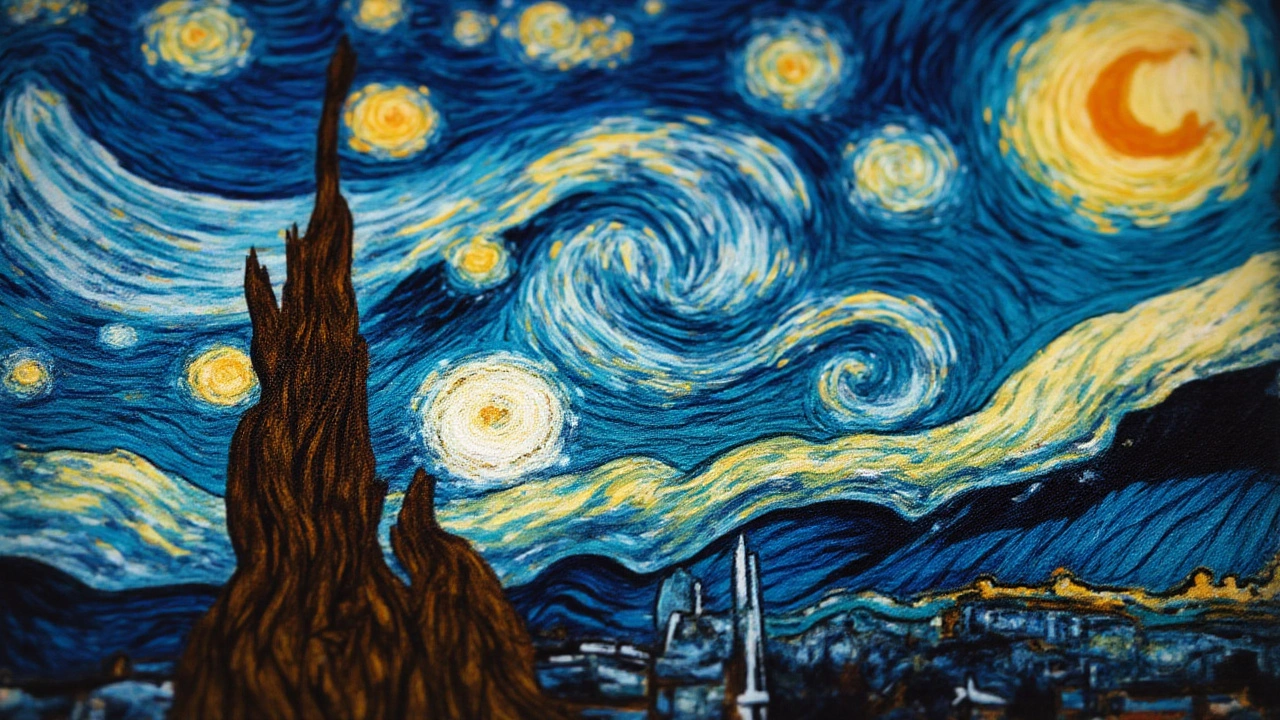
The Power and Personality of Oil Paint in Starry Night
If you’ve painted even once, you know how different paint types behave. Watercolors work a bit like memories—they fade and mix, hard to pin down. Oils, though, are stubborn. They stay wet and workable for days, even weeks, so you can push and pull the color around, scrape it back off, or build it up as high as cake frosting. Van Gogh needed that kind of flexibility for his vision, and he wasn’t shy about it. Scholars have analyzed “Starry Night” and found brushstrokes that are practically architectural—arches, swoops, spirals, and not a bit of that careful, tame blending you see with watercolors.
Here’s a cool fact: Van Gogh sometimes mixed his blues and yellows straight on the canvas. He didn’t labor over his palette for hours. Instead, he wanted intense color, wild contrast, and the power to bend paint to his will. When light hits “Starry Night,” you’ll see the sky almost shimmer due to the grooves in the paint's surface. That effect wouldn’t be possible if he’d used watercolor on paper—there’d be no ridges, no surface to catch the light like that.
Another interesting aspect is the way oil paint lets you fix mistakes or rethink decisions right in the middle of your work. Watercolor artists have to plan ahead. Once that pigment hits damp paper, there’s no erasing. With oils, Van Gogh could slice off what he didn’t like with a palette knife or just paint right over it. He did this often, adjusting the night sky’s swirls, amplifying the moon, tweaking the stars until they looked exactly as he imagined—a turbulence that felt cosmic, not literal.
The actual “Starry Night” measures about 29 by 36 inches, and up close you spot a riot of textures—almost as if he carved, not painted, the heavens. That sense of movement, the sheer electricity of the scene, is something you can only pull off with oil paint. No denigration to watercolors, but they’re just a different beast. If you want to try and evoke Van Gogh’s style at home, don’t be afraid to go thick—experiment with oils or even acrylics (which can mimic some of those textures with less mess and less drying time). Try painting with the flat of your brush or the edge of an old credit card. Embrace imperfection.
And the color choices? Van Gogh was obsessed with the emotional power of color, especially under the night sky. Ultramarine blue, chromium yellow, and the intense emerald green were among his favorites. These paints weren’t cheap, and he wasn’t rolling in money—often, he wrote to his brother to send more. There are even theories that he would reuse old canvases or scrape off dry paint to save costs. The result is a painting where color does half the talking, spilling from star to cypress like lightning bottled in a frame.
If you peek behind the myth, you find a man who understood paint like a chef knows her pantry. He wasn’t just picking up a brush and hoping for magic. Each stroke, each swirl, each electric color was a deliberate choice—and only oils could have brought “Starry Night” to life the way he intended.

Why the Watercolor Rumor Still Sticks (and How Van Gogh Played with Mediums)
You’d think the story would be simple: Van Gogh + Oil Paint = “Starry Night.” But life’s never that tidy, especially when art history, popular culture, and a whisper of confusion are involved. It’s not hard to see why folk—even in 2025!—still wonder about watercolor. First, Van Gogh loved to sketch and worked in a bunch of mediums. Dig into his archives, and you’ll find fantastic watercolor landscapes, delicate ink drawings, and blazing oil works. He even did his first studies of Provence in watercolor and ink, capturing those sunny fields before reaching for the oil tubes.
Plus, there’s something almost dreamlike about "Starry Night." The softer, melting transitions—where blues fade into black or a star halos in yellow—have led some to believe a watery paint must be at play. Add to that lore all those coloring pages, posters, and mass-market prints of “Starry Night” done in everything from watercolor sets to colored pencils, and the myth snowballs. If you spot a classroom activity or a café wall piece labeled “inspired by Van Gogh,” there’s a fair shot it was done in watercolor, acrylic, or even markers. That’s just part of how image and reputation grow apart.
The real Van Gogh, though, never shied away from experimenting. He worked in charcoal, chalk, and watercolor throughout his career, especially before he moved to France. Some of his letters describe using watercolor over pencil or ink to wake up an otherwise flat sketch. He loved the portability and speed—carrying a little watercolor kit meant he could work in the fields and paint peasants quickly without lugging heavy oil paints around. But once Van Gogh hit his stride in Arles and Saint-Rémy, oil became king, especially for his evening and night scenes.
If you’re curious, it’s worth comparing Van Gogh’s famous oils and his quieter watercolors. Pull up “Fishing Boats on the Beach at Saintes-Maries” (an oil painting) and “Boulevard de Clichy” (a watercolor) side by side. There’s a world of difference—the richness, the depth, the drama. But those watercolors are still gorgeously alive, showing his quick eye and gift for storytelling. He never limited himself.
For today’s artists or anyone just dabbling, the lesson isn’t about picking the “right” medium. It’s about matching your tools to your story. If you want your work to leap off the page, try oils like Van Gogh for that sculptural look. If you’re after something airy and unpredictable, play with watercolors and see where the brush leads you. And next time someone asks if “Starry Night” is a watercolor, you can spin a tale: yes, he dabbled, but for this cosmic masterpiece, Van Gogh loaded up his brush with oil, painted straight from the heart, and left us a sky that’s thick with legend—and paint.
